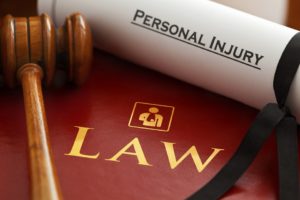California Personal Injury Claim: A Primer
 In a nutshell, California personal injury law means accepting the consequences for your mistakes. In this context, these consequences are almost always money damages. Even though no amount of money can restore a broken life, these are the only type of damages that a civil judge has the power to award, at least in most cases.
In a nutshell, California personal injury law means accepting the consequences for your mistakes. In this context, these consequences are almost always money damages. Even though no amount of money can restore a broken life, these are the only type of damages that a civil judge has the power to award, at least in most cases.
Before about 1920, there was no such thing as tort law. Like most other legal subjects, California personal injury law mostly comes from England, and for personal injury purposes, that means the landmark 1932 case of Donoghue v. Stevenson. After the plaintiff found a dead and partially decomposed snail in the bottom of a beer bottle, she sued the bottler. At the time, her claim that the bottler had a duty to provide his customers with a safe system which would not allow snails to get into his bottles of ginger beer was completely novel.
In siding with the plaintiff, the court articulated what became known as the neighbor principle, by ruling that, “You must take reasonable care to avoid acts or omissions which you can reasonably foresee would be likely to injure your neighbor.” This idea came to America and became the defender’s duty of care, which is the foundation of most California personal injury cases.
Types of California Personal Injury Cases
To receive compensation for their injuries, victim/plaintiffs have several legal options, mostly depending on the facts of the case. Broadly speaking, there are three kinds of torts in the Golden State:
- Intentional Torts: Assault, battery, and defamation are all examples of intentional torts, because the tortfeasor (negligent actor) either intended to harm the victim or was extremely reckless in his or her conduct.
- Strict Liability: At the other end of the scale, sometimes the tortfeasor’s state of mind is completely irrelevant. For example, if a defective product caused the victim/plaintiff’s injury, the tortfeasor is legally responsible as a matter of law, regardless of how much caution the tortfeasor did, or did not, exercise.
- Negligence: Most California personal injury claims are like Donoghue v. Stevenson. The beer bottler did not intend to harm the woman, but he was negligent in that his conduct fell below the acceptable standard of care.
In all these cases, the victim/plaintiff must establish negligence by a preponderance of the evidence, which means “more likely than not.” This is the lowest standard of proof that the law recognizes.
Elements of a Negligence Case
Negligence cases, specifically car crash cases, are the most common types of California personal injury claims. So, it’s important to look at these cases a little more closely.
A basic negligence case has five elements:
- Duty: As outlined in the neighbour principle, most people have a duty of ordinary care. In car crash cases, truck drivers, Uber drivers, bus drivers, and other common carriers have a higher duty of care. In fact, “They must do all that human care, vigilance, and foresight reasonably can do under the circumstances to avoid harm to passengers.”
- Breach: Violation of duty is typically a fact question. For example, talking on a cell phone and adjusting the air conditioner are both considered distracted driving, but most jurors would only say that the former constitutes a breach of duty.
- Cause: Most attorneys refer to this element as “but-for” causation, as in the car crash or other event would not have occurred but for the tortfeasor’s negligence.
- Foreseeability: The victim’s damages must be a foreseeable result, although not necessarily a direct result, of the tortfeasor’s negligence. For example, it is foreseeable that an out-of-control car might careen onto the sidewalk and strike a pedestrian, but it is not foreseeable that a doctor will make a medical mistake during a subsequent operation. However, in some cases, the foreseeability rule expands even further, so such actions are sometimes actionable.
- Damages: Under California personal injury law, victims are entitled to compensation for both economic losses, such as medical bills, and noneconomic losses, such as pain and suffering. To be eligible for compensation, there must be a physical injury, as a “near miss” auto accident does not constitute legal negligence. If the victim/plaintiff proves, by clear and convincing evidence, that the tortfeasor intentionally disregarded a known risk, additional punitive damages may be available.
For income tax purposes, the portion of a personal injury recovery directly related to a physical injury — and that includes both economic and noneconomic damages — is usually tax free.
Legal Issues
Important time deadlines apply in California personal injury cases. Typically, victims have two years from the date of negligence to file a legal damage claim. That sounds like a long time, but considering that medical treatment must be entirely or substantially complete before a case is filed, there is actually a small window of time.
In some California personal injury matters, damage caps may apply as well. For example, the California Medical Injury Compensation Reform Act limits medical malpractice noneconomic damages to $250,000. A damage cap may also apply in a car crash case that involves an uninsured victim/plaintiff or in certain claims that involve punitive damages.
Contact a California Personal Injury Attorney Today
For prompt assistance with a car crash or any other negligence claim in California, contact Russell & Lazarus, APC today. You have a limited amount of time to act before the deadline to file a claim.
Resources:
http://www.scottishlawreports.org.uk/resources/dvs/donoghue-v-stevenson-report.html
https://www.justia.com/trials-litigation/docs/caci/900/902.html
